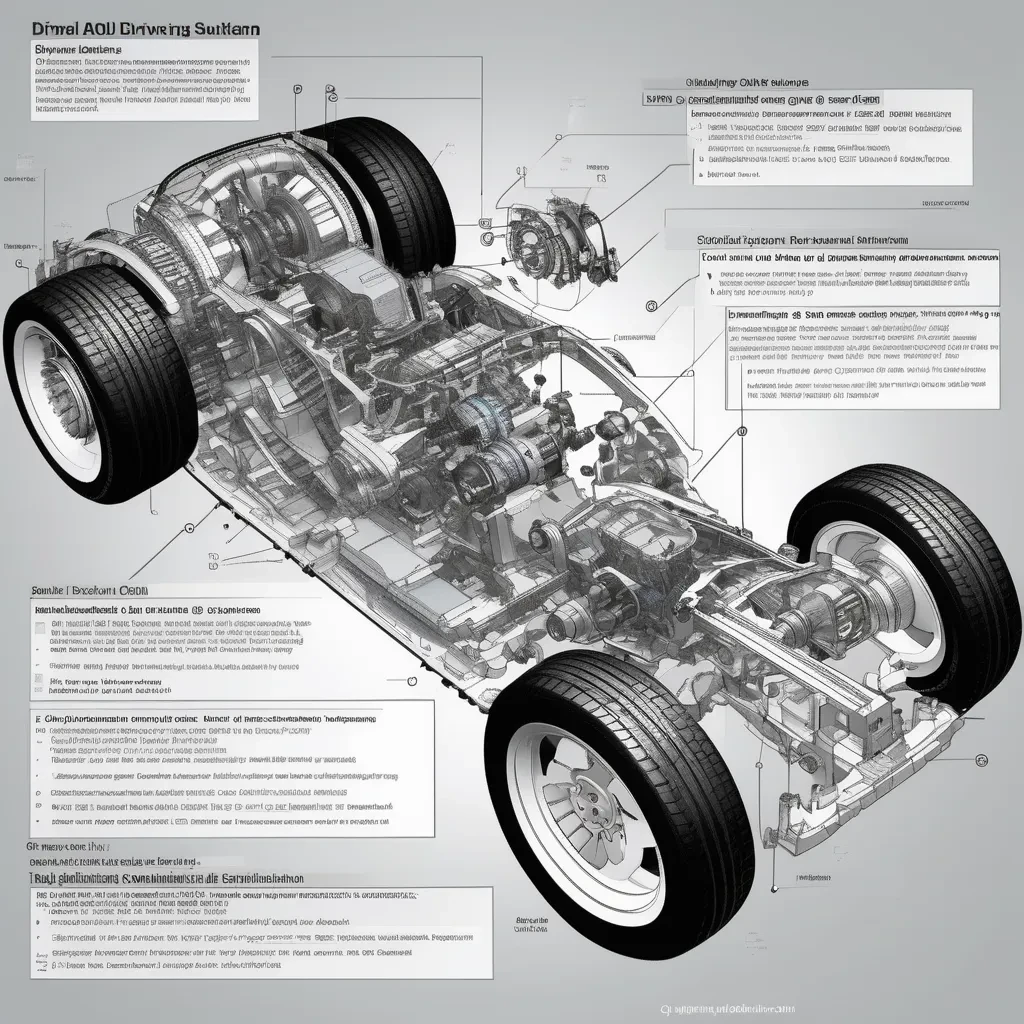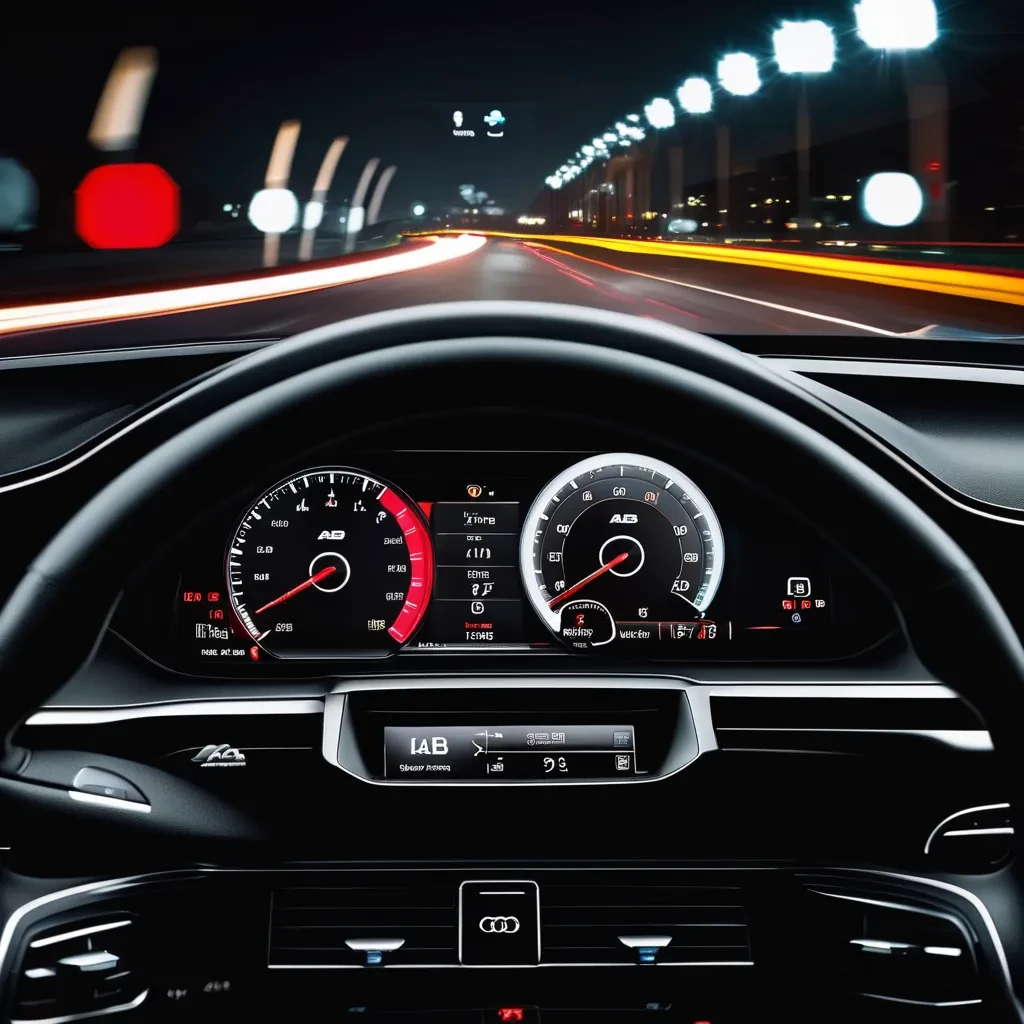The Audi Q5 is renowned for its luxurious design and advanced technology, making it a popular choice among SUV enthusiasts. However, like any sophisticated vehicle, the Q5 is not immune to issues, including drive system malfunctions.
A drive system malfunction in an Audi Q5 can cause unusual noises, vibrations, slipping gears, or warning lights. Common causes are worn parts, fluid leaks, misalignment, or faulty sensors.

Understanding the causes, symptoms, and solutions for drive system malfunctions is crucial for maintaining the performance and safety of your Audi Q5. For more insights about Audi, begin your exploration with Carsdensity.
Table of Contents:
Understanding the Drive System in the Audi Q5
The drive system in the Audi Q5 includes several critical components designed to deliver power to the wheels and ensure smooth operation. These components include the transmission, differential, driveshafts, and axles.
Each part plays a pivotal role in the vehicle’s performance, and any malfunction can significantly impact your driving experience.

Key Points About Drive System Malfunction on Audi
Broad Implications:
The drive system components are responsible for various issues, from basic engine management and transmission problems to complex fuel system faults. A malfunction could signal anything from a faulty sensor to a serious drivetrain issue.
Urgency and Safety:
This warning usually indicates significant systemic problems that could impact the vehicle’s efficiency or safety. Addressing these issues promptly is essential to prevent further damage or safety hazards.
System-Specific Issues:
In Audis, the drivetrain comprises a blend of mechanical and electronic systems. Issues could range from problems with the automatic transmission system to electronic stability control (ESC) or other drivability components.
Read Also: Audi vin decoder options list – Comprehensive Visual Guide!
How to Fix Drive System Malfunction Warning Message?
Safety First:
If this warning appears, immediately find a safe place to park and assess the situation. If you notice unusual behavior such as jerking, poor performance, or abnormal noises, continuing to drive could be dangerous.
Check for Obvious Issues:
Look for any visible problems like smoke, leaks, or strange smells. Also, check for additional warning lights on the dashboard for more clues about the issue.
Consult the Vehicle’s Manual:
Review your Audi’s manual to understand the maintenance recommendations related to the Drive System Malfunction message. The manual will provide model-specific guidelines and steps to address the issue.
Restart the Vehicle:
Sometimes, temporary electronic glitches can trigger a warning message. Restarting the engine may clear a false alert.
Read Also: Audi A4 Rattle When Accelerating – Causes, Diagnosis, and Solutions!
Diagnostic Check:
If the warning persists, perform a diagnostic test using an OBD-II scanner to read fault codes from the vehicle’s computer. These codes can help identify the exact problem and guide further repairs.
Visit a Mechanic:
Take your Audi to an authorized dealer or certified mechanic for professional diagnostics and repairs. The drive system may involve costly components that require expert attention.

Regular Maintenance:
Adhere to scheduled maintenance and checkups as per Audi’s recommendations. Regular inspections of the engine, transmission, sensors, and software updates, can help prevent such warnings.
Read Also: Audi q8 throttle lag fix – Don’t take a risk!
How can we prevent the Audi drive system malfunction?
Proper maintenance is key to preventing drive system malfunctions. Follow Audi’s routine checkups and maintenance schedules, including engine and transmission inspections and software updates, to keep your vehicle in optimal condition and avoid potential issues.
Recognizing Signs of Audi Drive System Issues – Drive Worry-Free!
Audi owners can detect drive system issues by noting the following signs:
- Bumpy Ride: A rough or jolting ride, particularly on uneven surfaces, may indicate suspension problems or other issues needing attention.
- Handling Challenges: Difficulty with steering or reduced control can signal drive system problems. If your Audi seems less responsive, it may affect overall driving performance.
- Dashboard Warnings: Modern Audis features advanced diagnostics that monitor components and trigger dashboard alerts like ABS or TPMS warnings when malfunctions occur.
- Unusual Sounds: Listen for odd noises while driving, such as grinding, clunking, or whining. These sounds might suggest issues with the drive system components, including the transmission or suspension.
- Power Loss: Sudden loss of engine power can indicate a drive system malfunction. Address this promptly to avoid safety risks, especially if acceleration becomes difficult.
- Gear Shift Delays: Delays or hesitation in gear shifting may point to drive system issues, affecting the transmission and overall driving experience.
- Fuel Efficiency Drop: A decrease in fuel efficiency could be a sign of drive system problems. If your Audi is consuming more fuel without a clear reason, check for underlying issues.

Read Also: Does Valvoline do Audi oil Changes? – A Deep Dive!
Addressing the Problem – Solutions for Resolving the Issue!
Upon detecting signs of a drive system malfunction in an Audi Q5, it’s crucial to take effective steps to resolve the issue. Start by consulting the owner’s manual for specific troubleshooting and maintenance guidance.
Initial DIY measures include checking fluid levels, ensuring proper tire inflation, and inspecting for visible damage. For a thorough resolution, consult a qualified mechanic or visit an authorized Audi service center.
Professionals have the expertise and diagnostic tools to accurately identify the root cause of the drive system malfunction. Using an OBD-II scanner to retrieve diagnostic trouble codes (DTCs) can provide valuable insights for targeted repairs.
Depending on the issue, repairs may involve replacing or fixing components such as the transmission, suspension, or sensors. Addressing the problem promptly helps prevent further damage and ensures the safety and optimal performance of your Audi Q5.
Regular maintenance, adherence to recommended service intervals, and proactive issue resolution contribute to a reliable and well-functioning drive system. Seeking professional assistance when needed ensures comprehensive and effective solutions for a smooth driving experience.

Read Also: My Audi Vehicle is not Parked Safely – Don’t take risks!
Identifying Potential Causes of Drive System Malfunction
Drive Mode Irregularities: Unusual behavior in different drive modes may suggest a malfunction in the Audi Q5’s drive system.
- Sensor Anomalies: Issues with sensors detecting road conditions could contribute to driving system problems.
- Temperature-Related Challenges: Extreme temperatures, whether hot or cold, can affect the performance of drive system components.
- Electrical System Interference: Problems with the vehicle’s electrical system, including wiring or connectors, could lead to drive system malfunctions.
- Software Glitches: Bugs or glitches in the vehicle’s software might impact the proper functioning of the drive system.
- Tire Size Discrepancies: Variations in tire sizes, whether due to replacements or uneven wear, may lead to drive system irregularities.
- Fluid Contamination: Contaminated fluids, such as dirty or degraded transmission fluid, can impair the drive system’s efficiency.
- Road Debris Impact: Foreign objects or debris affecting crucial components under the vehicle can lead to drive system complications.
- Suspension System Wear: Wear and tear in the suspension system, including bushings and shocks, might contribute to drive system issues.
- Alignment Misadjustments: Improper wheel alignment can strain the drive system and affect overall vehicle performance.
Is It Safe to Drive with a Drive System Malfunction Message?
It is safer to pull over and park rather than continue driving if a drive system malfunction message appears. Driving with this warning can be dangerous and might lead to additional malfunctions or increased hazards. Ideally, find a secure location to stop, stay calm, assess the situation, and contact a professional for assistance.
What to Do When the Drive System Malfunction Warning Appears?
Ensure you are in a safe spot before turning off the engine. Restarting the vehicle might resolve a temporary glitch, but keep an eye out for other issues like unusual noises, power loss, or transmission problems. A professional mechanic or an Audi service center is crucial for a thorough diagnosis and repair.
Read Also: Do Audi Dealers Negotiate? – A Complete Visual Guide!
Can I Fix a Drive System Malfunction Myself?
While some minor issues, such as replacing sensors, might be manageable for experienced DIYers, most drive system malfunctions require professional expertise. Audi’s advanced vehicle management systems often need a thorough diagnosis and repair by a professional to avoid further damage.

Frequently Asked Questions:
How much does it cost to repair a Drive System Malfunction in an Audi Q5?
The cost to repair a Drive System Malfunction can vary widely depending on the specific issue. It may range from a few hundred dollars for minor repairs to several thousand dollars for major components like the transmission or control systems. Consulting a professional for an accurate estimate is advisable.
How can I prevent Drive System Malfunctions in my Audi Q5?
Regular maintenance and timely servicing are key to preventing Drive System Malfunctions. Adhere to your Audi Q5’s maintenance schedule, including checking fluid levels, inspecting drivetrain components, and updating software as needed. Proactive care can help avoid potential issues.
What are common symptoms of Drive System Malfunction in Audi Q5?
Common symptoms include erratic shifting, unusual vibrations, dashboard warning lights, decreased power, and difficulty steering. If you experience any of these signs, it’s essential to address them promptly to prevent further damage.
How often should I have my Audi Q5’s drivetrain inspected?
It is recommended to have your Audi Q5’s drivetrain inspected during routine maintenance, typically every 30,000 to 60,000 miles, or as specified in your owner’s manual. Regular checkups can help identify and address potential issues before they become major problems.
What does the diagnostic check involve for a Drive System Malfunction?
A diagnostic check involves using an OBD-II scanner to read fault codes from the vehicle’s computer system. These codes provide information about the nature of the malfunction, allowing the mechanic to pinpoint the issue and recommend appropriate repairs.
Conclusion:
At the end of the conclusion,
A drive system malfunction in an Audi Q5 may result in strange noises, vibrations, gear slippage, or warning lights. Typical causes include worn components, fluid leaks, alignment issues, or faulty sensors.











